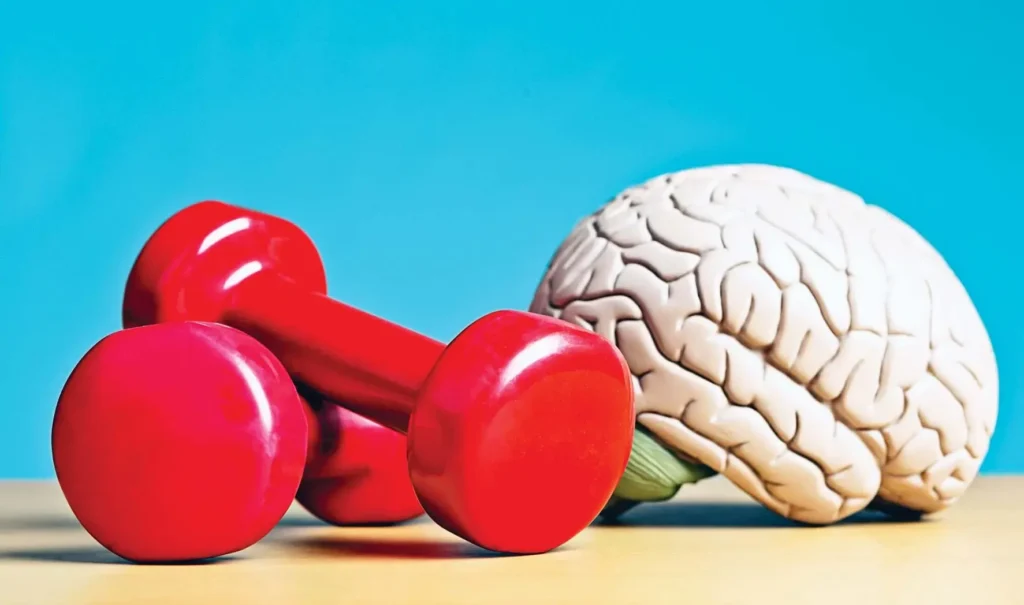Ever walked into a room and felt calm, energized, or stressed without knowing why? The spaces we live in do more than just set the scene. They influence our thoughts, feelings, and actions.
At Mintpaldecor, we’re showing how interior design affects mental health Mintpaldecor. Your home’s layout, colors, and textures are not just for looks. They’re tools for mental strength.
Recent studies prove the psychological effects of interior design are real. From sunlight on your walls to clutter on your desk, every detail affects your mood and focus.
This article dives into the effects of interior design on wellness. It shows how Mintpaldecor turns ordinary spaces into places that boost mental clarity and happiness.
Key Takeaways
- Your home’s design directly impacts your mental state and daily emotions.
- Colors, lighting, and spatial layouts can reduce anxiety or boost productivity.
- Mintpaldecor uses science-backed strategies to enhance psychological well-being.
- Small design changes create big differences in how you experience your living spaces.
- Interior design isn’t just about style—it’s a tool for long-term mental health support.
The Science Behind Interior Design and Mental Wellbeing

Every detail in your home sends signals to your brain. These signals shape your emotions and behaviors. Studies show that interior design choices affect mental health, proving the psychological impact of interior design is real and deep.
Understanding the Psychological Impact of Your Living Space
Your brain reads spaces without you even realizing it. Cluttered rooms can make you stressed, while open layouts calm you down. The psychology of interior design shows why soft textures or soothing colors make you feel safe and relaxed.
Research on Environment and Emotional Health
Research found that 70% of people in well-designed spaces had lower stress levels. Here’s what science says:
| Design Element | Psychological Effect |
|---|---|
| Natural Light | Reduces depression symptoms (Harvard Study, 2023) |
| Neutral Color Schemes | Lower aggression and fatigue (Journal of Environmental Psychology) |
| Biophilic Elements | Improve focus by 23% (University of Oregon, 2022) |
“Spaces that mimic nature reduce stress hormones by triggering innate relaxation responses.” – Dr. Sarah Green, Environmental Psychologist
How Your Brain Processes Design Elements
Colors like blue can slow your heart rate. Jagged furniture edges can make you feel threatened. The effects of interior design on wellness involve brain pathways: warm lighting boosts serotonin, and tidy spaces reduce anxiety. Knowing this psychology of interior design helps you create spaces that clear your mind and calm your spirit.
Key Design Elements That Influence Your Mental State

Every corner of your home can change how you feel. By picking certain design elements, you can make your living spaces better for your mind. These choices, like colors and room layouts, quietly affect your mood every day.
The Power of Color Psychology in Your Home
Color greatly affects your mood. Bright colors like red or orange can energize your workspace. On the other hand, calm colors like blue or green can soothe your bedroom.
Warm colors help you focus, while cool colors lower stress. Think of color as a way to match each room’s purpose.
Light Exposure and Its Effect on Mood
Natural light helps control your mood by regulating your body’s clock. Place your workspace near windows for a boost of energy during the day. At night, use warm lights to signal it’s time to relax.
Smart bulbs let you change light colors to fit your mood and needs.
Spatial Organization and Mental Clarity
- Open layouts reduce clutter, making you feel freer.
- Having clear zones (work, rest, social) helps avoid feeling overwhelmed.
Texture and Materials That Promote Comfort
“Textures add sensory depth, making spaces feel safe,” says the International Interior Design Association. Soft fabrics and warm wood absorb sound, while materials like wool retain thermal energy, regulating comfort without drafts.
These elements work together to shape your daily experience. By choosing intentional design, you create a sanctuary that supports both mind and body.
How Interior Design Affects Mental Health Mintpaldecor Approach
Mintpaldecor uses science and creativity to make spaces better for mental health. They focus on the mental health benefits of good interior design. They design spaces that meet your needs and goals.
They start by understanding your lifestyle, mental health goals, and what you like. This way, they create spaces that help you relax and focus.

Their main goal is holistic interior design for mental wellness. They use color, lighting, and layout to improve your mood. They work with you to make a positive home environment for mental health.
They find out how things like clutter or bad lighting affect you. This helps them design a space that works for you.
“After redesigning my home with Mintpaldecor, I feel more grounded. The space now supports my mental state daily.”
Mintpaldecor’s process includes:
- Research-driven solutions informed by environmental psychology studies
- Customized layouts that reduce stress triggers
- Material choices promoting sensory comfort
Every project is a detailed experience. They make sure every design choice has a purpose. By using proven strategies and your unique needs, they create spaces that help your mental health.
Their success stories show how good design can improve mental wellbeing. It becomes a key part of your long-term health.
Creating Spaces That Reduce Stress and Anxiety
Turn your home into a peaceful haven with interior design for stress reduction. Spaces that support mental health can be calming sanctuaries. They offer a safe place for managing anxiety or depression. By focusing on your living space, you can make areas that help your emotional well-being.
Designing Calming Retreats Areas
Create spaces that are all about calm. Use soft lights, comfy seats, and gentle colors for relaxation. These areas are great for those with depression, offering a steady comfort. Adding sound-dampening materials like area rugs can also help reduce noise stress.
- Make a cozy reading nook with dimmable lamps
- Choose colors like sage green or soft grays
- Include calming features like a small water fountain
Minimizing Visual Clutter
Too much clutter can make you feel anxious. To support mental health, declutter to ease your mind. Keep surfaces clean and use smart storage to keep things organized. A tidy space helps you focus on recovery, not chaos.
- Use under-bed storage bins and floating shelves
- Try a daily 5-minute decluttering routine
- Opt for simple decor to avoid feeling overwhelmed
Incorporate Nature for Calm
Biophilic design connects you to nature, lowering stress management. Studies show that natural textures and plants can cut anxiety by up to 25%. These elements bring a sense of safety by mimicking nature’s soothing rhythms.
Nature-inspired designs can reduce stress hormones by improving air quality and visual comfort.
- Put potted plants like snake plants or succulents in important spots
- Use wood or stone for organic textures
- Hang artwork or textiles with a nature theme
Boosting Productivity and Focus Through Thoughtful Design
Turn your workspace into a productivity hub by making smart design choices. Use colors and lighting to keep your energy levels up. Bright, warm colors like soft yellows or blues help keep your mind clear.
“A well-designed workspace doesn’t just hold tools—it fuels the mind to achieve more.” — Dr. Linda Carter, Human Factors Design Institute
For those who love design, making your space better means creating zones for different activities. Set up areas for deep work, brainstorming, and relaxing. A gaming experience area, for example, can be fun and focused with modular furniture.
- Choose ergonomic chairs that adjust to prevent strain during long hours.
- Use vertical storage to keep things tidy and within reach.
- Layer lighting with task lamps and natural light to stay alert.
Smart planning saves on shipping freight costs. Choose furniture that does more than one thing to avoid big, heavy items. Affordable, modular systems save money and use space well. Even small touches, like wall art or plants, can make a big difference without spending a lot.
Matching your space’s look with its function boosts both creativity and daily tasks. By carefully arranging these elements, you create a space where productivity flows smoothly into your day.
Designing for Better Sleep and Recovery
Your bedroom’s design is key to good sleep, which is vital for mental health. By improving layout, color palette, and making tech-free zones, you can make your bedroom a place for recovery. These steps turn your bedroom into a sanctuary for rest.
Bedroom Layouts That Promote Restful Sleep
Experts say placing things strategically can help you relax. Move beds away from walls to make the room feel open. Use nightstands to keep things tidy, avoiding mess. Expert parenting tips: Place beds so you see the room but not the windows.
- Align mattress against a solid wall for stability
- Keep walkways clear to minimize subconscious tension
Color Schemes for Relaxation
Soft blues and muted greens help you relax. Warm whites add balance to your design styles while keeping things calm. Here’s how bold colors can help with sleep:
| Color | Effect | Design Style |
|---|---|---|
| Blue | Reduces heart rate | Scandinavian, Coastal |
| Gray | Encourages mental neutrality | Modern minimalist |
| Beige | Enhances calmness | Rustic, Transitional |
Creating a Technology-Free Sanctuary
Get rid of screens to help your body make melatonin. Charge your devices in another room and use old clocks. For modern parenting, make tech-free zones in kids’ rooms.
Use charging stations outside. This reliable parenting advice helps kids sleep better. Use blackout curtains and sound machines to set boundaries.
Small changes in layout, color, and tech use can make your bedroom a place for rest and recovery.
Balancing Aesthetics and Functionality for Holistic Wellbeing
Your home should be both beautiful and useful. Holistic interior design combines style with practicality. It creates spaces that care for your mind and soul.
By focusing on personal expression, adaptability, and sustainability, you make spaces that grow with you. They stay comfortable through life’s changes.
Personal Expression Through Design
Add items that show who you are—a family photo gallery, art, or cultural artifacts. These items help you feel grounded and less stressed. For families, it means creating areas where kids can be creative.
This approach supports empathetic parenting, which values each person’s uniqueness.
Adapting Spaces for Different Mental Health Needs
Spaces should change like authoritative parenting does. A cozy reading nook with soft lights helps you relax. Open-plan work zones help you focus.
Expert tips say make rooms for different moods. This could be a quiet area for anxious teens or a sensory-friendly corner for young kids.
“Spaces that adjust to emotions, like empathetic parenting, foster resilience,” says Dr. Lena Torres, child development specialist.
Sustainable Design Choices for Long-term Wellness
Go for eco-friendly materials like bamboo or recycled fabrics. These choices help reduce environmental worries and bring lasting comfort. Here’s a comparison of materials for mental wellness:
| Material | Benefits |
|---|---|
| Bamboo flooring | Durable, natural texture |
| Recycled metal accents | Modern aesthetic with low environmental impact |
| Organic cotton textiles | Soft, chemical-free comfort |
Mixing beauty and function means your spaces evolve with your family. It supports various parenting styles and mental health through design. Every choice should celebrate both beauty and purpose, making a home that grows with you.
Must Read This Blog Post: Explore the //vital-mag.net Blog for Wellness Inspiration
Conclusion
Your living space greatly affects your mood. How Interior Design Affects Mental Health Mintpaldecor is more than just a concept—it shows how good design impacts your well-being in many ways.
Things like color, lighting, and how organized your space is matter a lot. They shape your day-to-day life. By understanding this, you can make your home better for your mental health.
Making small changes can help a lot. For example, better lighting or calming colors can reduce stress. Adding natural materials or keeping things tidy can also help.
Creating a good home environment for mental health is a journey. As your life changes, so can your space. It can help improve your mood and daily life.
Mintpaldecor can help you make these changes. Start with one area, like organizing a room or picking chic colors that make you happy. Your home can be a place of peace and health for your mind and body.
See how push your design choices can improve your mental health today.
Must Read: Delicious Roam Diet Recipes for Health & Wellness
Frequently Asked Questions
1. How does interior design affect mental health?
Your living space greatly affects your mood. Good interior design can make you feel better, reduce stress, and improve your overall wellbeing. This is thanks to things like color, layout, and natural light.
2. What design elements are most impactful on mental health?
Important elements include color, lighting, and how you arrange your space. Also, the materials and textures you choose can make you feel certain ways. These factors can impact your comfort and productivity every day.
3. Can a well-designed space actually reduce stress and anxiety?
Yes! A well-thought-out space can help lower stress and anxiety. This is done by reducing clutter, adding natural elements, and creating calm areas. These efforts can make your home feel peaceful and safe.
4. What role does color play in influencing mood?
Colors can really affect how you feel. Bright colors can energize you, while soft colors can calm you down. Picking the right colors is key to feeling emotionally well.
5. How can I create a positive home environment for mental health?
To create a positive space, focus on decluttering and using natural light. Choose soothing colors and set up areas for relaxation. These steps can help you relax and recharge.
6. What is holistic interior design?
Holistic interior design looks at more than just looks. It considers how a space affects your emotions and mental health. It aims to create spaces that support your wellbeing by matching design with your lifestyle and needs.
7. How can interior design improve productivity?
Good design can make your workspaces better. Use ergonomic furniture, arrange things well, and choose colors that energize you. These changes can help you focus and be more creative.
8. What are some expert tips for designing spaces for better sleep?
To improve sleep, make areas tech-free, use calming colors, and arrange furniture for safety and relaxation. These steps can greatly improve your sleep and mental health.
9. How does the psychological impact of my living space manifest?
Your home’s design can subtly shape your thoughts and feelings. Feeling safe and comfortable in your space can lead to clearer thoughts and emotional stability. This can greatly improve your mental state.
10. What are the benefits of incorporating natural elements in my home design?
Adding natural elements like plants, light, and organic materials can reduce stress and boost your mood. These elements can make your home healthier and support your mental wellbeing.



